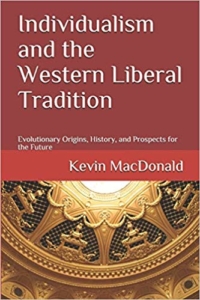Civic Nationalism’s Last Gasp?
The Dying Citizen: How Progressive Elites, Tribalism, and Globalization Are Destroying the Idea of America
Victor Davis Hanson
Basic Books, 2021
Reviewed by Nelson Rosit
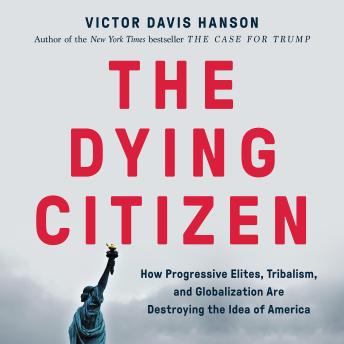 Is Victor Davis Hanson Donald Trump with a Ph.D. in classics? There are certain parallels between the author of The Dying Citizen and the forty-fifth president. While Professor Hanson uses the rubric “citizenship,” Mr. Trump uses the acronym MAGA to describe a renewed civic nationalism that might provide enough centripetal force to hold together this multi-ethnic entity called the United States for a while longer.
Is Victor Davis Hanson Donald Trump with a Ph.D. in classics? There are certain parallels between the author of The Dying Citizen and the forty-fifth president. While Professor Hanson uses the rubric “citizenship,” Mr. Trump uses the acronym MAGA to describe a renewed civic nationalism that might provide enough centripetal force to hold together this multi-ethnic entity called the United States for a while longer.
Hanson (b. 1953), grew up in the San Joaquin Valley and pursued an academic career. He is now a professor emeritus of classics at Fresno State and a senior fellow at the Hoover Institution, a conservative-leaning think tank. Hanson’s latest book is a cogent articulation of the present policy positions of the establishment Right. It can be used to gauge the policy departure from the McCain-Romney Republicanism of the recent past. The important question, however, is: Can “true citizenship”/MAGA/civic nationalism provide any utility for the cause of White America?
VDH realizes that the United States is in crisis. He terms 2020 a revolutionary year, and believes only shock therapy can save the country. His quick assessment of ailments includes growing economic inequality, open borders, the rise of tribalism, the increasing power of a bureaucratic Deep State, and expanding globalism, all of which threaten to undermine American society. Of course, such a diagnosis begs the question: What is the treatment regimen? No nostrum is prescribed.
In his Introduction Hanson makes some common-sense observations: Self-governance is not an easy task, and to have rights people must assume responsibilities. I think the Founders made the point succinctly when they stressed the need for civic virtue to make a representative republic succeed.
Being a classicist, Hanson gives the reader some ancient history. Athens is usually identified as the first democracy. “Consensual government did not appear until about twenty-seven hundred years ago, most prominently in Athens, twenty-five hundred years after the beginning of large urban settlement in the Near East” (6). At least with VDH you do not get theories such as the African origins of Greek civilization as found in Black Athena,[1] or the Iroquois League being the model for American federalism.
The first chapter deals largely with economics, and, from a conventional-Right perspective, Hanson is pretty solid in this area. A strong middle class is essential for political and social stability. Judging from the context of his remarks Hanson includes the more established blue-collar workers in this middle class. The present economic system features stagnant wages and a raising cost of living that squeezes the middle. Massive immigration at home and outsourcing abroad has contributed to economic insecurity, and Hanson believes this has played a role in the decline of marriage. The author notes that most economic experts—men such as Paul Krugman and Larry Summers—state that high-paying production jobs are leaving America, and not coming back. Hanson does not buy that argument, and neither did former president Trump.
De-emphasizing Race
Chapters Two and Three discuss immigration and ethnicity (tribes), and here Hanson shows his respectable conservative stripes. He is against massive immigration, especially when many enter illegally, because it makes assimilation more difficult. Though he knows better, VDH still proclaims American exceptionalism and the magic dirt theory. He admits: “The few unusual countries, ancient and modern, that have tried to unite diverse tribes without imperial coercion have usually fared poorly” (106). The author does not identify those countries that have not “fared poorly,” but in any case, I would remove the modifier ‘usually’ from the above quote. I would also add that the American empire is definitely willing to use coercion to make its multi-ethnic state work. But if one has faith that the United States will be the exception the laws of history then you believe everything will work out in the end. The magic dirt corollary posits that when natives from dysfunctional societies such as Somalia and El Salvador reach the U.S., they will not replicate the cultural characteristics of their homelands, but will instead become model Americans. So far, all the data are against the magic dirt theory.
Due to the author’s belief in assimilation, he differentiates between multiracialism which he approves and multiculturalism which he opposes. A racialist would counter that culture is, in part, a racial construct. Large numbers of migrants who are genetically distant from the majority population make assimilation impossible. But VDH sees tribalism as “reactionary to the core” while clinging to his utopian hopes for these genetically distant migrants: the answer to growing tribalism in the United States is “true citizenship . . . that diminishes the power of ethnic identification and race” (112).
Hanson rightly criticizes the Left for trying to rewrite American history. Yet he indulges in the same practice to support his assimilationist project. He claims: “The United States has always cherished its universally applicable melting-pot ethos of e pluribus unum” (107). Of course, the U.S. has not always had a universalist ethos (e.g., the 1924 immigration restriction law), and the phrase e pluribus unum originally referred to uniting the several former colonies into one nation.
Later in the chapter VDH to “talks the talk” by castigating cultural Marxism and social justice warriors, but he misses the main point. He asks, “So why has twenty-first-century American race and gender victimization supplanted doctrinaire Marxist class oppression in the culture of resistance against established norms?” The reality is that it’s all about destroying White political and cultural hegemony, but Hanson, as a mainstream conservative, can’t accept that. He notes that “Today’s social justice warrior apparently would not wish to empathize with a West Virginia coal miner but prefers instead CNN anchor Don Lemon or billionaire rapper Jay-Z” (115)—implicitly referring to the White working class, but not discussing the obvious racial dynamic of a multi-racial left-liberal elite opposed to the White working class. In fact, it is racial. Is the man being willfully blind? A little further on Hanson almost stumbles upon the answers his own question, but again the obvious conclusion eludes him. He notes that “old Marxism had once sought to transcend race” (117). Yes, it tried, but it failed to transcend race, and a similar fate will befall the author’s solution of “true citizenship,” because race is an essential human characteristic.
VDH realizes the purpose of the Left’s “assaults on traditional commemoration—from holidays to statues to eponymous street names—is to redefine the past as a way of recalibrating the future” (119)—George Orwell said it best in Nineteen-Eighty-Four: “Who controls the past controls the future: who controls the present controls the past.” But he fails to note these assaults are part of the war on White America The denigration of traditional heroes is, in effect, a psyop against White America.
In keeping with his non-racial civic nationalism Hanson believes “the worst thing about identity politics as currently practiced by the left is that it has stimulated the rise of identity politics on the right” (125). Okay, the Right is always responding to developments on the Left. I would call this a law of political science: The Right is always reactive, though not necessary reactionary. So Edmund Burke, father of modern conservatism, was reacting to the French Revolution, Mussolini was reacting to Lenin, and the January 6th rioters were reacting to the George Floyd riots of 2020. VDH claiming that White self-defense against attacks is worse than the attacks themselves! But race does not really exist, so what is the fuss about? Ignoring all the population genetic studies showing clear genetic clusters corresponding to traditional racial categories, he resorts to simply asserting that “it is difficult to agree upon a definition of what ‘white’ actually is, given that it is not necessarily aligned with superficial appearance” (127). I guess that if it cannot be defined to VDH’s satisfaction, it doesn’t actually exist.
The Deep State
Once Hanson gets away from the issue of race, he begins to make more sense, and in Chapter Four he deals with the Deep State. For decades mainstream political science textbooks have discussed the vast discretionary authority wielded by unelected, upper-level bureaucrats, not to mention the power of the military-industrial complex. However, when the Right began to criticize these entities as the Deep State, it was immediately labeled nothing but a conspiracy theory. Likewise, one can celebrate the growing ethnic diversity of America, but if it is termed “The Great Replacement,” it is a conspiratorial hoax. In his opposition to powerful centralized bureaucracy and other unelected institutions, I detect some libertarian leanings in his attitude toward government. My own view is that government is simply a vehicle; who is behind the wheel is what matters. There’s nothing inherently wrong with centralized government. Government is a vehicle that can take you where you want to go, or it can careen off a cliff.
Trump
Hanson is generally pro Trump in a nuanced way. In 2019 he published The Case for Trump in which he wrote that, although a flawed character, the president had a coherent agenda and had implemented much of it.[2] By 2019 almost everyone on the Dissident Right was very disappointed with Trump, some bitterly so. There were several reasons why Trump failed to meet expectations, and certainly opposition from the Deep State was one. In 2016–17 Trump, the tough guy New York real estate mogul, was a babe in the woods.
As a political novice who ran against both the Democrats and the GOP establishment Trump struggled to find talented and loyal administrators to fill top executive branch positions. His newly appointed National Security Advisor Ret. General Michael Flynn was the victim of a “government ambush” (171). The legitimacy of Trump’s 2016 election was questioned by the Russian Collusion Hoax. Robert Mueller put together “perhaps the most high-powered and experienced team of investigators even assembled by the Department of Justice” (174). After 22 months and 40 million dollars no Russian collusion with members of the Trump campaign was found.
After the failure of the Mueller investigation, impeachment was the next tactic used to hamstring the Trump presidency and render him un-reelectable. During the Trump administration members of the executive branch exhibited “an unabashed audacity” in resisting the authority of the president. For example, former FBI Director James Comey wrote a book, A Higher Loyalty, which “publicized the deep state’s sanctimonious notion that violating laws and protocols in service of its own purported higher ethical agendas . . . was more than justified” (184).
The Constitution
Hanson shares with American conservatives a reverence for the U.S. Constitution. It is almost a fetish. I certainly hold the Founding Fathers in the highest esteem, but if the Constitution is our salvation, we would not be in the predicament we are in now. The Constitution is open to differing interpretations, and it can be and has been amended. Nevertheless, the document does act as an impediment to radical change from the Left. Hanson sums up the Left’s position: “[W]hy let old white men of a bygone age continue, from their graves, to impose their ossified values on a far more enlightened, ethnically and racial diverse, and knowledgeable twenty-first century nation?” (217).
According to Hanson several parts of the Constitution are vulnerable to being dismantled or circumvented. The Electoral College, an integral component of our federalist system, is one example, and the erosion of the First Amendment through “hate speech” restrictions is another. The technique used in the latter case is “freedom of speech, not reach.” The First Amendment prohibits government interference with free speech, but the Left believes that “the media, publishing, and especially Big Tech . . . have the right—and sometimes the responsibility—to apply codes of conduct and censorship in their own domains” (243). The Left also believes in the legitimacy of applying pressure on media companies to censor speech by government actor, as indicated in the recent revelations on the role of the FBI in getting Twitter and other media companies to censor the Hunter Biden laptop story, and the role of the Biden administration in getting Twitter to censor Covid-related opinions. Abridgment of the Second Amendment is also a concern of the author who believes that “the Founders in some sense saw the Second Amendment as the most important of the Bill of Rights” (251).
Another legal issue worrying Hanson is what he calls the new nullification, or what could simply be termed selective law enforcement. There are sanctuary cities that “seek to render elements of federal immigration law null and void” (254). Then there is the “de facto nullification” of giving rioters “space” for violent protests involving assaults, looting, and arson. The practice became official policy in April 2015 during the Freddie Gray riots in Baltimore when than mayor Stephanie Rawlings-Blake ordered city police to stand down in the face of mayhem. This approach became widespread in late spring and summer of 2020 during the Floyd riots when virtue-signaling mayors in cities such as Minneapolis, Portland, and Seattle refused to enforce laws protecting lives and property. In the case of Minneapolis, the pronouncements of Mayor Jacob Frey actually helped to incite violence in his city.
Globalism
Chapter Six deals with globalism. Here is, perhaps, one of the big changes that has occurred within the conventional Right since the McCain-Romney days. (Of course, Mitt Romney is still a Republican senator, so obviously the transformation was only partial). Under true citizenship/MAGA, the globalist policies of free trade, open borders, and offshoring have been replaced, at least in theory, with America First. Hanson defines globalism as simply “putting global concerns above national interests” (269). Globalism, championed by Western elites, dilutes VDH’s concept of true citizenship. Globalists are “post-citizens” who wish to transcend the boundaries of race, sex, and nationality. According to the author, organizing international relations around nation states is not ideal, but it “is the least pernicious system compared to the alternatives” (272).
It is not just that globalism has hurt the US with “lost jobs, investments, control over borders, and national cohesiveness,” it has resulted in “eroded indigenous customs and traditions the world over” (281). Hanson continues: “the global creed has destroyed the ancient idea of localism and regionalism as central to the human experience.” Globalists do not value the “unique traditions, ancestries, local histories—and differences” of particular locales (302).
The hubris of the globalists is particularly galling to VDH. They see themselves as the new elite whose education, training, and values entitle them to guide world affairs. Despite their lofty opinions of themselves, the author observes that the globalists of WHO failed completely to contain Covid-19. VDH considers NATO as part of, and perhaps a principal enforcer of, the globalist project. He quotes NATO’s first Secretary-General Lord Hastings Ismay who described the organization’s mission as “to keep the Russians out, the Americans in, and the Germans down” (297). No mention of containing communism. The Great Replacement is one of the results of globalism. Hanson does not use the term, but he relates how Bill Kristol, the Jewish neo-conservative pundit, declared that there was “a need to replace an increasingly pathological American white working class” with immigrants (291).
Epilogue
The book ends with an epilogue obviously written sometime after the main text. Here Hanson again discusses Trump, along with the 2020 election, January 6th, and the Biden administration. Though generally supportive, VDH expresses mixed feelings about the former president who could be “an idealistic populist, a rank cynic, a canny pragmatist, neither, or a combination of the three” (324). Once more, Trump was a bit naive, he “under-appreciated” and at times “seemed oblivious” to the political forces arrayed against him (326). Being a political outsider, he had no cadre of experienced and knowledgeable people to fill key administrative positions. Plus his “mercurial persona” and “often off-putting behavior” made him difficult to work with.
Hanson expresses doubts regarding the legitimacy of the 2020 election. Tens of millions of people voted by mail “with far less audit of signatures, addresses, and deadlines” than in the past. Voting by mail is “fraught with dangers of fraud and a general inability to authenticate voter eligibility and identification” (336).
As for the January 6th capitol protests, Hanson points to an obvious factor that the mainstream media and the political establishment refuse to acknowledge. By justifying the violence during the so-called “racial reckoning” of 2020, the Left created the climate for the assault on the capitol in January 2021. The protesters that day were poorly led, if indeed there was any real leadership at all. Some thought that violence was the way to be heard, that this was the way it is done now, this is how you do it. They did not realize that those rules only applied to the other side. As VDH puts it: “[T]he Left had for months contextualized the mayhem of Antifa and BLM and therefore should not have been surprised when others were emboldened to follow their violent example. The public was left with the general impression that, for political reasons, violence in the streets was being condoned and perpetrators not held to account for their illegal actions” (340).
Conclusion
So, having considered Hanson’s “true citizenship,” which I have equated with MAGA/civic nationalism, we return to the question posed at the start: Is this movement an on ramp to explicit White advocacy? Or is it a dead end? As Yogi Berra opined: “It’s tough to make predictions, especially about the future,” but I believe Trumpism will fade and will prove to be the last gasp for civic nationalism.
There are several reasons for this prediction: It will be difficult to have Trumpism without Trump, and his future is uncertain at best. For all his faults Trump is an authentic personality and seemed to have a unique ability to incite the Left. Meanwhile possible successors, such as Ron DeSantis, smack of opportunism. Of course, the Romney wing of the Republican Party never went away and they are working day and night to return to the pre-2016 business-as-usual approach. But the main reason that civic nationalism will fail to deliver is its refusal to face the reality of race and the importance of racial differences in human affairs.
Whatever happens, politics will not return to pre-2016 status quo ante. There are long-term trends, such as political and social polarization, that appear to be accelerating. Political violence, practiced by the Left since the “long hot summers” of the 1960s and more recently taken up by Antifa and BLM, has spread to elements of the political Right and could intensify. Due to selective law enforcement, however, violence, other than in self- defense, is likely to be counterproductive for the Right. Is there a role for the Republican Party to move a White agenda forward? As alluded to above, the neo-conservatives are working hard to regain full control of the party, and they hold the purse strings. But do they have the votes? American political parties are subject to change—a century ago, the Democrats were the White man’s party, and the Republicans, the party of Lincoln, received the Black vote. In any case, voting is without risk or cost and takes very little time or effort so any return on such a small investment is a plus.
In the final analysis electoral politics will only go so far in bringing about fundamental societal change. As Andrew Breitbart wrote: “Politics is downstream from culture.” People need to live the change they want. One encouraging trend sees White Americans moving to areas of the country that they find more politically and socially congenial, hopefully creating supportive networks. Liberal journalist Bill Bishop has termed this The Big Sort.[3] While others call it an ingathering.[4] This is where Hanson’s true citizenship might be most applicable, becoming civically engaged at the local level to build healthy White communities.
[1] Martin Bernal, Black Athena: The Afroasiatic Roots of Classical Civilization, Rutgers University Press, 1987.
[2] Victor Davis Hanson, The Case for Trump Basic Books, 2019.
[3] Bill Bishop, The Big Sort: Why the Clustering of Like-Minded America is Tearing Us Apart, Mariner Books (2009).
[4] See for example: Eric Paulson, “Nine Reasons for an Ingathering,” The Occidental Observer (November 3, 2010).




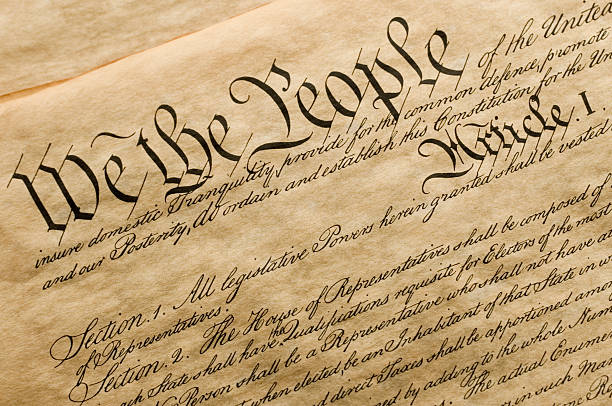
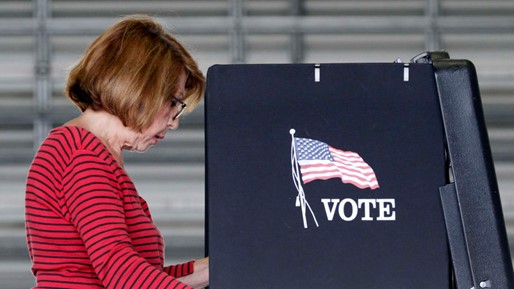
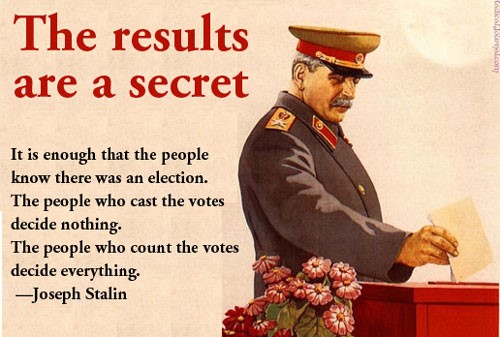
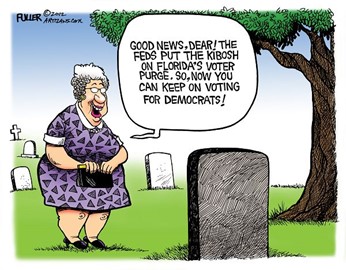
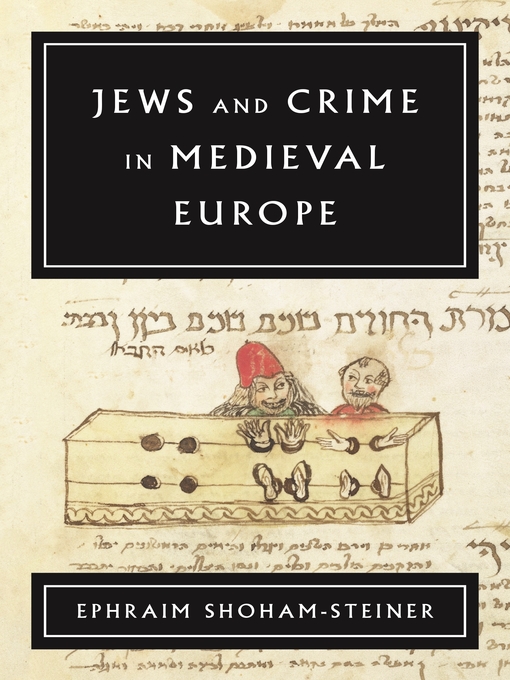 Thus begins Ephraim Shoham-Steiner’s Jews and Crime in Medieval Europe— a clear and remarkable enunciation of the sanitized, curated, and paranoid nature of Jewish historiography. The above statement illustrates that, while Europeans and their history have long been open to every group libel and accusation, the writing of Jewish history has always been a careful, censored, self-conscious process, designed in large part to portray Jews in a positive light or, at the very least, in such a way as to bleach out all transgressions. Arguably, Jews also engage in such activity as a form of self-deception, leading to a commonplace self-image of innocence and high self-esteem—which in turn fuels higher levels of ethnocentrism. David Sclar, in
Thus begins Ephraim Shoham-Steiner’s Jews and Crime in Medieval Europe— a clear and remarkable enunciation of the sanitized, curated, and paranoid nature of Jewish historiography. The above statement illustrates that, while Europeans and their history have long been open to every group libel and accusation, the writing of Jewish history has always been a careful, censored, self-conscious process, designed in large part to portray Jews in a positive light or, at the very least, in such a way as to bleach out all transgressions. Arguably, Jews also engage in such activity as a form of self-deception, leading to a commonplace self-image of innocence and high self-esteem—which in turn fuels higher levels of ethnocentrism. David Sclar, in 